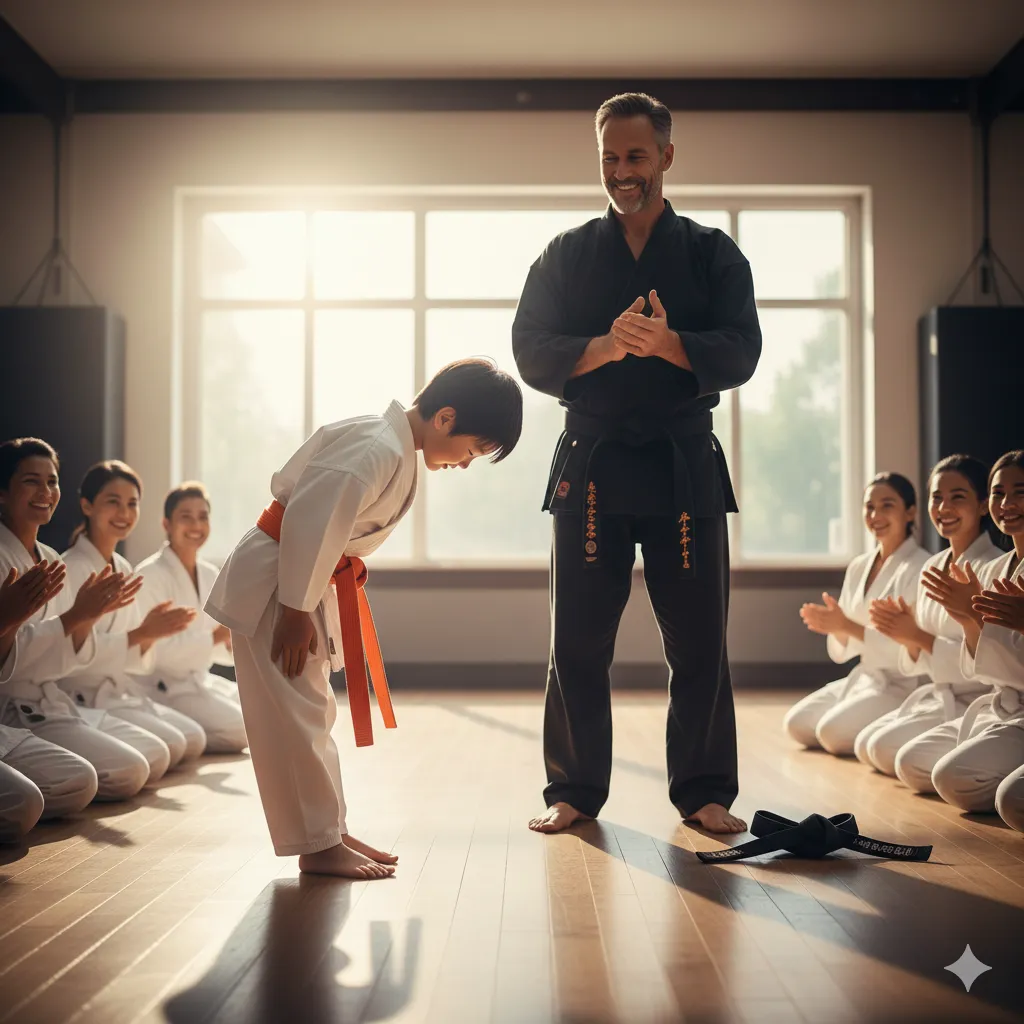
Martial Arts Belt Ceremonies: More Than Just a New Belt
"A black belt is a white belt who never gave up.” - Unknown
For every young martial artist, few moments are as exciting and meaningful as belt promotion day. It’s not just about receiving a new color of fabric to tie around the waist, it’s about celebrating progress, effort, and personal growth.
In martial arts, belt ceremonies carry deep meaning and tradition. They remind students that success isn’t about being the best in the room, it’s about being better than they were yesterday. Each belt represents a chapter in their journey, filled with lessons of perseverance, respect, and dedication.
Let’s take a closer look at what makes martial arts belt ceremonies such powerful experiences for children and families alike.
1. The Belt System: A Symbol of Progress
The colored belt system is one of the most recognizable aspects of martial arts. From white to black and every color in between, each belt symbolizes a student’s growth in skill, discipline, and character.
White Belt: The beginning of the journey. It represents a blank slate and the openness to learn.
Yellow and Orange Belts: Early progress. Students begin understanding foundational techniques and respect for structure.
Green and Blue Belts: Growing confidence and self-control. The child’s effort starts showing in their movement and mindset.
Red and Brown Belts: Advanced stages. These students often take on leadership roles and mentor others.
Black Belt: Not the end, but a new beginning, a sign that the student is ready to deepen their learning and pass knowledge on.
Every color marks a step forward, a visible sign of the hard work students put in week after week.
2. The Ceremony: A Celebration of Effort
A belt ceremony is not just a test or evaluation, it’s a celebration.
When students step onto the mat for promotion, they aren’t only demonstrating kicks and forms; they’re showing commitment, respect, and perseverance. Parents watch proudly as their children bow to their instructors, perform techniques, and finally receive their new belt, often tied by a teacher who has guided them along the way.
Many schools include special moments like:
Personal recognition: Instructors highlight each student’s growth and strengths.
Applause and encouragement: The entire group cheers for their peers, reinforcing community and teamwork.
Words of reflection: Students may be asked to share what they’ve learned or what goals they want to set next.
This sense of ceremony gives the achievement real weight, kids don’t just earn a belt; they earn respect for their effort and attitude.
3. The Meaning Behind the Belt
In martial arts, a belt is much more than a rank. It’s a symbol of inner growth.
When a child ties on a new belt, they’re reminded that persistence pays off. That success isn’t instant, it’s built through small, consistent steps. It’s also a lesson in humility: every belt earned means returning to the mat as a student, ready to learn more.
Instructors often use the ceremony to reinforce these values, reminding students that while technique can be taught, character must be earned.

4. Building Confidence and Motivation
One of the most powerful outcomes of a belt ceremony is the confidence it instills in children. The moment they receive that new belt, especially in front of peers and parents fills them with pride and self-belief.
This confidence doesn’t stay in the dojo. Kids begin approaching schoolwork, friendships, and other challenges with the same mindset: “If I can do this, I can do anything.”
Parents often notice a shift in attitude after promotions. Children who may have once been shy or easily discouraged start taking more initiative and showing greater perseverance in all areas of life.
5. The Role of Tradition and Community
Martial arts belt ceremonies also connect students to something greater, the tradition and culture of the art itself. Whether it’s Taekwondo, Karate, or Jiu-Jitsu, these ceremonies are rooted in values passed down for generations: respect, humility, and honor.
They also strengthen community bonds. Families gather to celebrate together, older students help tie belts for younger ones, and everyone shares in the excitement of achievement. That sense of belonging is one of the most rewarding parts of martial arts training.
6. A Lesson That Lasts a Lifetime
At the end of the day, the new belt fades, but the lessons last forever.
Each ceremony teaches students that goals are achieved through patience, hard work, and consistency. It reminds them that failure isn’t final, it’s part of the journey. And perhaps most importantly, it reinforces that every achievement is earned, not given.
So, the next time your child ties on their new belt, remind them: it’s more than just a piece of fabric. It’s a symbol of who they are becoming stronger, wiser, and more confident every day.
Final Thought
Belt ceremonies in martial arts are powerful moments of recognition, reflection, and renewal. They celebrate not just the child’s physical progress but their emotional and mental growth. And for many parents, watching their child stand tall in a new belt is a reminder that martial arts is shaping far more than skills, it’s shaping character.
